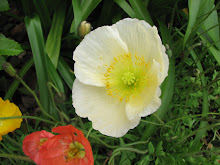It's always a good feeling to eat or cook Biriyani. One dish can go wrong even if a garlic pod is more :D. Had a privilege of having my hubby's Periyappa (80+) and Periamma (70+) for 2 weeks at our home. Her biriyani was always Best with the same taste, every time we visited them. Made her cook for us and got the inputs from her, to fine tune the taste of biriyani. Thanks to her and so far, for the past 2 years, its error-free biriyani with the same taste every time 👍👍.
A little bit of variation will always be there initially, because of the spices we use, after series of trials, you can get it corrected in course of time;-)
Here you go for the recipe......
Ingredients:
Mutton - 1/2 kg (we get sheep meat only)
Seeragasamba rice - 4 cups (Used double deer brand)
Garlic - 1 1/2 whole (used China garlic. If using Indian garlic, use 2 whole garlic
Ginger - 1/2 inch size
Onions - 3-4 depending on large/medium sized
Green chilies - 8-10, depending on the size n spice
Tomatoes - 1 big sized
Mint leaves - 1 bunch
Curry leaves - 1 sprig
Coriander leaves - few
Bay leaf - 2
Cinnamon stick - 1/2 inch sticks - 2 nos
Cardamom - 3 nos
Cloves - 5-6 nos
Fennel seeds (Sombhu/Saunf) - 1 teaspoon
Red chili powder - 1/2 to 1 tablespoon (depending on required spice level)
Ghee/butter - 2 tablespoons
Cooking oil - 3 tablespoons
Salt to taste
For cooking mutton:
We get sheep meat here, so need to cook it separately as it is little hard. Normally I will pressure cook it for 8 - 10 whistles, with the below ingredients. Do not cook it fully, as it would be cooked again with rice, so adjust the cooking time accordingly.
Bay leaf -1
Cinnamon stick - 1/4 inch stick
Cardamom -1
Cloves - 2
Fennel seeds - 1/2 teaspoon
Turmeric powder - 1/2 tablespoon
Chilli powder - 1/2 tablespoon
Curd - 1/2 cup
Water -1 cup
Method:
Wash mutton, cut into small pieces and pressure cook as above.
Once it is cooked, separate the mutton pieces and cooked water. We would be adding this too with the biriyani later.
Cut onions into thin slices. Slit green chilies. Slice tomatoes.
Wash mint leaves thoroughly and keep the leaves separately.
Make a coarse paste of ginger and garlic without water.
Wash and soak water in 2 cups of water for 15 mins. Water used for soaking is also counted, so measure it for soaking.
Note : Rice and water is always 1:2 ratio. If you are soaking for more than 15 mins, then the ratio is 1:1.5.
Heat oil in a pressure cooker. Once it is hot add bay leaf, cinnamon stick, cardamom, cloves and fennel seeds. Saute for a minute.
Add green chilies and onions. Saute it until onions turn golden brown.
Add ginger garlic paste, curry leaves and tomatoes and saute it until the raw smell goes off.
Once it is done, add the cooked mutton, chili powder, salt to taste and saute well for 2 minutes.
Then add mint leaves, mix it and cook for 5 minutes. Then add soaked rice without water and ghee and mix well.
Add 8 cups (soaked water + cooked mutton water + plain water) of water, coriander leaves and mix well.
Check salt and spice levels before closing the lid. Pressure cook for 2 whistles and switch off stove.
Wait until the pressure releases completely. Once opened, mix it well with the ladle stick, so the rice won't break.
Enjoy it hot with
raitha.
Cooking time 45 minutes.
Serves 6 persons.





















